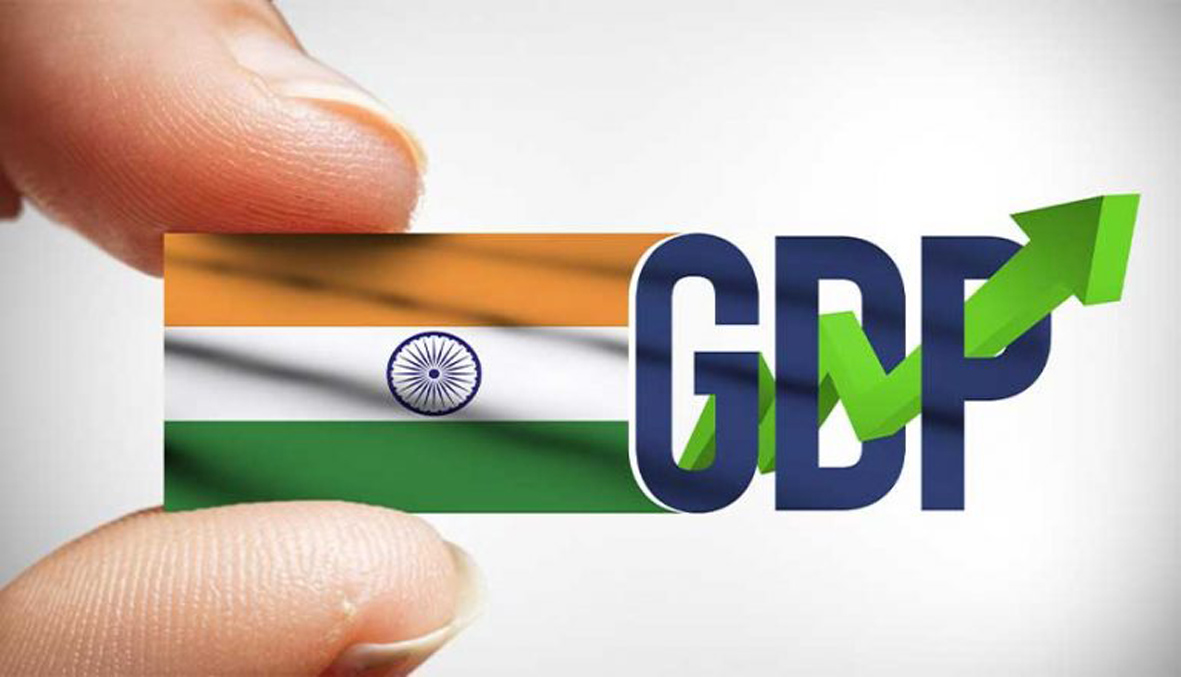Wg Cdr Mahesh Chander Sudan
We, the people of India, have inherited poor and stagnated economy at the time of Independence from English empire. With a population of 340 million, its rate of literacy was alarmingly low at 12 percent and GDP of mere 2.7 Lakh crore accounting for a paltry 3 per cent of the world total GDP. The journey of Indian economy that raised it to the fifth largest economy of the world is laudable and replete with many ups and downs. Latest figures issued by Ministry of Statistics and Programme Implementation state that India has a real GDP of 147.79 Lakh crores, and as of 2018, it accounted for 7.74 percent of global GDP. As the nation approaches 75th year of Independence, it is worth looking back as to how far the nation has moved in a short span of time. On the literacy front, India has remarkably achieved almost 75 per cent overriding the turbulences it suffered during British rule in this regard. However, outbreak of COVID 19 has affected economy for some time as the localized and nationwide lockdowns during pandemic ravaged the economic growth to the point of contraction in decades for the first time. Hence, the road to recovery of Indian economy is not going to be smooth and swift.
Historically India remained top most economy of the world for almost 1700 years from the year 1 AD constituting 35 to 40 per cent of world GDP. Indian Economy flourished during Mughal Rule and started suffering exploitation during British Empire that rendered it to poor and stagnated economy at the dawn of Independence. The economic policies of the Independent India for some time were guided by a combination of protectionism, import substitution and social-democratic pattern that induced extensive regulation which is characterized as License Raj till 1991. The end of cold war and an acute balance of payments crisis of 1991 led to adoption of a broad economic liberalization in India. Annual GDP growth remained 6% to 7% and from 2013 to 2018, India was fastest growing major economy surpassing China. The long term growth perspectives of the Indian Economy remain positive due to its young population, healthy savings and invest rates, increasing globalization and its integration into the global economy. It may be appropriate to highlight that some economists believe that economic slowdown of 2017 is attributed to shocks of demonetization in 2016 and introduction of Goods and service tax in 2017. The tax structure of GST is still being reformed to mitigate involved complicacies and system bottlenecks for attaining easy implementation and user friendly status. No doubt, removal of old multiple taxation system helped government to arrest evasion of tax, corruption and it enhanced government receipts but complicated process of implementation especially at user point impairs expansion. India is sixth largest consumer market of the world and GDP is primarily domestic consumption driven. In 2019 India emerged ninth largest importer and twelfth largest exporter of the world.
Post Liberalization, Indian economy did away License Raj, reduced tariffs and interest rates and ended many public monopolies, allowing automatic approval of foreign direct investment (FDI). It progressed towards a free market economy, with substantial reduction in state control and allowed increased financial liberalization by the turn of 21st Century. This was accompanied by increase in life expectancy, literacy rates and food security though urban populace benefited more than the rural one. Indian economy is classified into three major sectors namely agriculture, industry and services. Agriculture sector contributes only 17% of Indian GDP where as it employs 53% population of India. It had biggest share that reduced over the period of time. Industry Sector at the same time contributes 29.6% of the Indian GDP as per survey conducted in 2018-19. This is also known as secondary sector of the economy. Services sector encompasses Financial, real estate & professional services, Public Administration, defence, and other services, trade hotels, transport, communication and services related broadcasting. This sector is also known as tertiary sector of the economy. Currently, this sector is the backbone of the Indian Economy and contributing around 54.3% of the Indian GDP.
Covid-19 has affected all economies of the world. Indian economy cannot remain in isolation and has not yet recovered from the ill effects of pandemic. However, it is felt that India can potentially build upon three positive aspects – push in the rural economy, stronger federalism and a huge consumption base as commented by former Governor of Reserve Bank of India. In his foreword on a Telugu book titled “Maandhyam Mungita Desam” (Nation in Recession) authored by Tummala Kishore, he said the challenges for the government in the months and years ahead is clear : to put the economy back on a healthy growth trajectory and ensure that growth is inclusive, with lower income households too enjoying benefits of the rapid growth. Stating that the Indian Economy was already in the troubled shape even before the COVID 19 crisis, the former RBI governor said a “V” shaped recovery in growth rate does not mean a ‘V’ shaped recovery in absolute output and the level of output in 2021-22 will be lower than what the country achieved in 2019-20. It therefore demands a balanced handling of the economy with prudent application of policy instrument to achieve better implementation of growth oriented economic push across the nation. Jai Hind, Jai Bharat.
Trending Now
E-Paper


